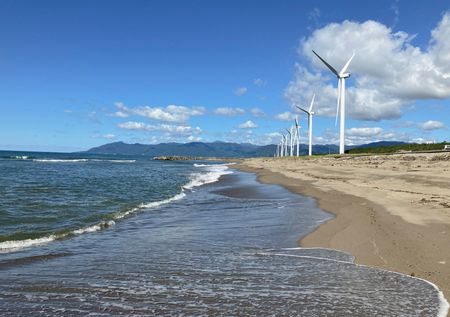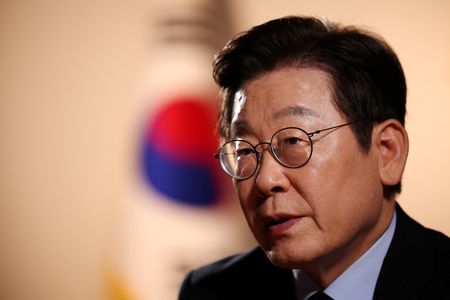By Sudarshan Varadhan
SINGAPORE (Reuters) -Curtailment of wind and solar power generation in Japan is set to rise to record levels this year due to increased nuclear power use, a Reuters review of industry data showed, exacerbating pain for a sector seeing an exodus of players.
In the years since the 2011 Fukushima disaster prompted a nationwide nuclear shutdown, the world’s fifth-largest power producer has gradually restarted some nuclear plants.
Fourteen of 33 commercially available reactors have been restarted, including two that came back online last year. Another received preliminary approval this year for a restart that may not come until 2027.
That has helped cut Japan’s fuel costs, particularly expensive fossil fuel imports, and meet rising power demand from chipmakers and data centres. But since nuclear power cannot be easily ramped up and down, grid flexibility has suffered.
Curtailments refer to the amount of wind or solar power that could have been produced but was pre-emptively rejected because a grid hit its limits.
Across nine of Japan’s ten grid regions, curtailments jumped 38.2% to 1.77 terawatt-hours (TWh) or 2.3% of total green power generation in the eight months through August, according to a Reuters analysis of data from the Renewable Energy Institute (REI).
That compares with 1.28 TWh or 1.8% of renewable output in the same period last year, and the previous annual record of 1.9% in 2023.
“Nuclear units are prioritised in Japan’s electricity dispatch, meaning wind and solar are forced to curtail,” said Michiyo Miyamoto, Japan energy finance specialist at the Institute for Energy Economics and Financial Analysis (IEEFA).
She cited increased output from the Shimane No.2 reactor in the western region of Chugoku, which was restarted in December, as one such example.
DISTANT GOALS
Japan wants renewables to account for as much as 50% of its annual power output by 2040 and for nuclear to make up 20%. That compares with levels of 23% and 8.5% in fiscal 2023 respectively.
But the loss of revenue from curtailments has only added to tougher times for the renewable energy sector in Japan. A record 52 renewable energy developers exited Japan in the fiscal year ended March – including eight bankruptcies, IEEFA said in an August report.
August also saw groups led by trading house giant Mitsubishi walk away from three offshore wind projects due to soaring costs, stirring concerns about the viability of other offshore wind projects.
New wind and solar installations in Japan grew just 3.3% in 2024, the slowest pace since 2009, data from the International Renewable Energy Agency shows.
“If curtailments rise beyond expectations, this will make it harder for renewable projects to recover their costs, which may discourage new investments,” said Kenichi Onishi, researcher at the Institute of Energy Economics, Japan.
The Japan Community Power Association, the Japan Council for Renewable Energy and the Japan Wind Energy Association did not respond to requests for comment.
Transmission shortages and maintenance outages have also led to increased curtailment. During the first five months of the current fiscal year ended August, the island of Kyushu had curtailments of 7.6% while the northern region of Tohoku saw the biggest climb, from 2.1% to 5.8%, REI data showed.
“The main issue is insufficient grid transfer capacity from high-renewables regions. Kyushu’s photovoltaics build-out outpaced local demand and export capability,” said Uran-Ulizi Batyabar, Tokyo-based analyst at Rystad Energy.
Japan is working to reduce curtailments by building inter-regional transmission lines, promoting battery storage, and encouraging demand during periods of high power generation, said Minoru Shioda, an official at the industry ministry’s energy efficiency and renewable energy department.
Shioda said higher hydropower generation due to heavier-than-expected snowfall led to curtailments in Tohoku this spring. Analysts also cited the restart of an Onagawa nuclear unit in Tohoku last October as a key reason for the curbs.
“Unless regulatory reform prioritises renewables over incumbents, Japan risks falling further behind global trends (of surging renewables growth),” said Tetsunari Iida, chairperson of the Institute for Sustainable Energy Policies.
($1 = 148.56 yen)
(Reporting by Sudarshan Varadhan in Singapore, Additional reporting by Yuka Obayashi in Tokyo; Editing by Edwina Gibbs)










